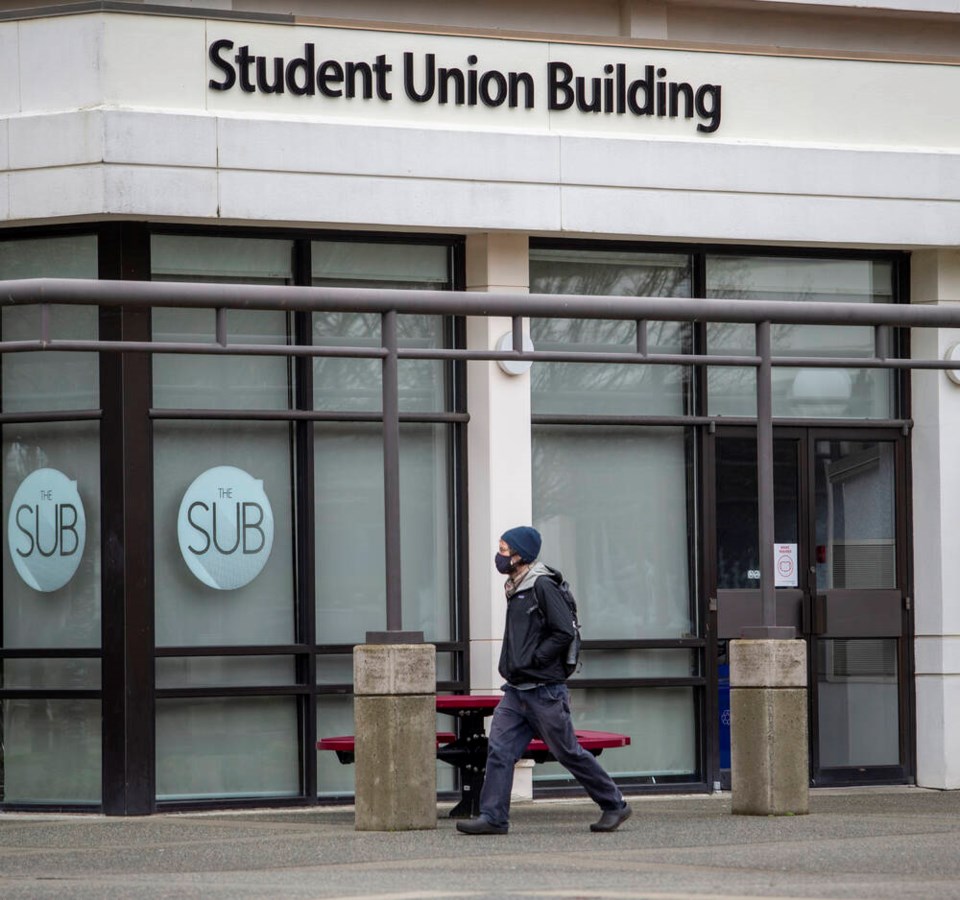As reported cases of the Omicron variant of COVID-19 continue to rise, post-secondary students on Vancouver Island are increasingly voicing their discomfort at being forced to return to in-person classes.
At the University of Victoria, students returned to in-person learning on Monday after two weeks of remote instruction.
Julia Denley, a third-year biology student, said the return to classrooms is erecting a barrier for some people.
“For many students with disabilities, in-person higher education has long presented challenges,” said Denley, who lives with a genetic disorder called Ehlers-Danlos syndrome.
Things like chronic pain, limited stamina and mobility issues can make commuting to campus and sitting in classrooms difficult, she said, creaing a “disproportionate disadvantage” for students with disabilities.
“Online classes have allowed me to expend my limited energy on academics, rather than on managing symptoms in an environment that exacerbates them,” Denley said.
The University of Victoria Society for Students with a Disability said it has seen a large increase in concern.
“Many students are understandably feeling like the university is dismissing their well-being,” said Delicia Jacobs, interim co-president of the society.
“Contrary to what is being said, not all students’ mental health is better in person, especially when in-person [learning] increases student anxiety to a detrimental amount,” Jacobs said.
“Students cannot learn when basic needs like safety are being dismissed. The idea all students’ mental health is better in person is ableism.”
The University of Victoria Faculty Association, which represents about 900 faculty members and librarians, is “very strongly” against the return to in-person teaching. In a survey done this month, close to three-quarters of members said they were very concerned about returning and being infected.
“Our members are faced with are classes with between 200 and 300 students who aren’t socially distanced,” said Lynne Marks, president of the association. “Some of them have babies and toddlers at home. Others are older or living with older family members.”
She said the administration has indicated it will be flexible, allowing educators to offer classes online in case of illness. But the measure falls short of keeping everybody safe from infection, she said.
The university said its decision to return to in-person classes was based on advice from B.C.’s provincial health officer.
Karen Johnston, associate director public affairs at UVic, said the university received information from the province on Monday suggesting “the vast majority of the post-secondary community, including faculty and staff, are at very low risk of hospitalization due to COVID-19.” The information was based on analysis of hospitalization data, she said.
“While transmission can occur in any setting, high immunization rates and sector-wide measures such as masking in the post-secondary communities have enabled a lower-risk environment in support of in-person instruction,” she said.
Students and faculty at UVic aren’t alone in their concern.
At Simon Fraser University in Burnaby, students, staff and faculty at staged a walkout Monday, calling for a return to online learning.
The group said students risk infection in class and each time they have to travel to campus on public transit. When students are sick or self-isolating, they risk missing class due to a lack of audio-visual recording systems in place.
Similar concerns have been voiced by students at Nanaimo’s Vancouver Island University, which started its spring semester with in-person classes on Jan. 10.
With a toddler at home and pregnant with her second child, student Hanna Bourget worries she may catch the virus at school and infect her family. She also worries about missing class if she becomes ill and has to self-isolate.
“Some, but not all, of the instructors will allow students to record the classes for others who aren’t there — but not everybody has friends in the same class or access to the technology,” she said.
Dr. Carol Stuart, university provost and vice-president academic, said it is difficult for professors to mix in-person and online instruction.
“Online and in-person delivery have very different pedagogies and are challenging to deliver in a hybrid (mixed together) format, especially when it is a last-minute switch,” she said. “Some courses with more than one section do offer this choice.”
Bourget said she feels like she’s being forced to choose between her health and her future.
“In the class that I attend, there must be close to 40 students in a windowless room — it feels like we are crammed in like sardines.”
parrais@timescolonist.com





